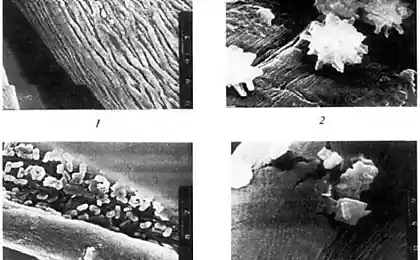474
Researchers have found a way to turn sawdust into gasoline

Researchers from the Center for chemistry of surfaces and catalysis of the Catholic University of Leuven, Belgium, recently announced the successful testing of a new chemical process to convert cellulose from sawdust into hydrocarbon chains. These hydrocarbons, according to scientists, can be used as additives in gasoline or a component in plastics.
Cellulose is the main substance in plant matter and is present in all non-edible parts of wood, including straw, grass, cotton, and wood products. At the molecular level, cellulose contains a long carbon chain. However, to keep the length of these circuits is still not possible, due to the reduction of oxygen in the processing of cellulose (the oxygen atoms are binding between the hydrocarbon molecules). Scientists were able to develop a new method of bio-processing of cellulose to produce a hydrocarbon chains.
Currently the researchers have filed a patent application for the developed method. In the laboratory they built a chemical reactor, in which load the sawdust and add a catalyst. When the desired conditions of temperature and pressure the process of obtaining saturated hydrocarbons (alkanes) takes about half a day. In fact, the method allows to produce a petrochemical product from biomass.
Of course, the resulting product is "intermediate", in other words, to convert it to its pure gasoline requires additional processing steps. But even this "green" hydrocarbon may have other applications, for example, in the production of ethylene, propylene and benzene, which are part of plastics, rubber, insulation foam, nylon, coatings, etc.
According to the researchers, from an economic standpoint, cellulose has great potential. This material is available everywhere. In addition, manufactured from cellulose carbon chain consists of 5 to 6 carbon atoms – so-called "light naphtha" having the properties of solvent and chemical characteristics very close to gasoline.
Scientists believe the new method will be particularly useful for use in Europe, where there are few reserves of crude oil, and due to high occupancies, there is no possibility of an easy extraction of shale gas.
Source: www.cheburek.net
Ripples of space-time could reveal strange stars
Anti-aging cream from the inventor of the artificial pancreas Chris Toumazou























